We adore new road tech and love nothing more than fondling the latest and greatest goodies that claim to cure all manner of cycling woes, but inevitably, among many hits, there’s been a host of rather big misses.
Here are five of our most-least-favourite bits of road tech that we reckon you’d probably rather forget.
And for the mountain bikers, here's the top 5 MTB tech flops of all time.
1. Scott Drop In bars
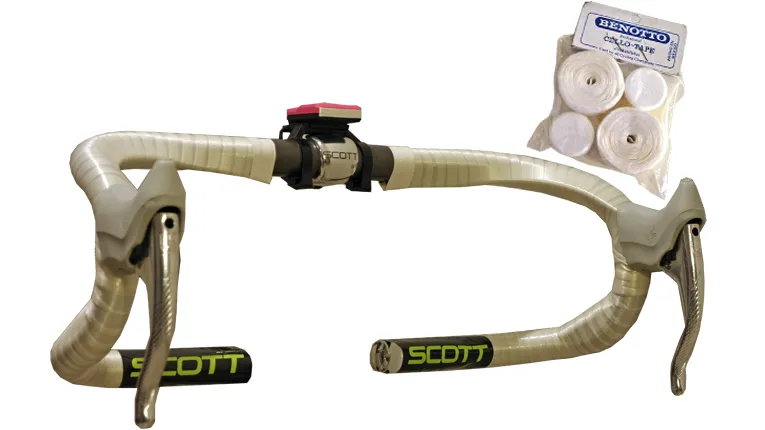
Greg LeMond was one of the first riders to really twig about the importance of aerodynamics in road racing, and Scott’s Drop In handlebars, with their unique inward facing extensions at the bottom of the drops, were one of his most memorable — though definitely not his most extreme — developments for the brand.
The bars were designed to give riders a very low and narrow position that, in theory at least, would be more aerodynamic.
However, presenting the full width of your arms to the wind would likely negate any aero benefit of being positioned lower, and the general consensus is that the extensions became more useful as an area for Scott to plaster its name on than anything else.
When speaking to Greg LeMond fans, Eric Boyer, team-mate to the man himself, was also happy to admit that while the Drop In bars “looked cool”, in practice, “they were pointless”.
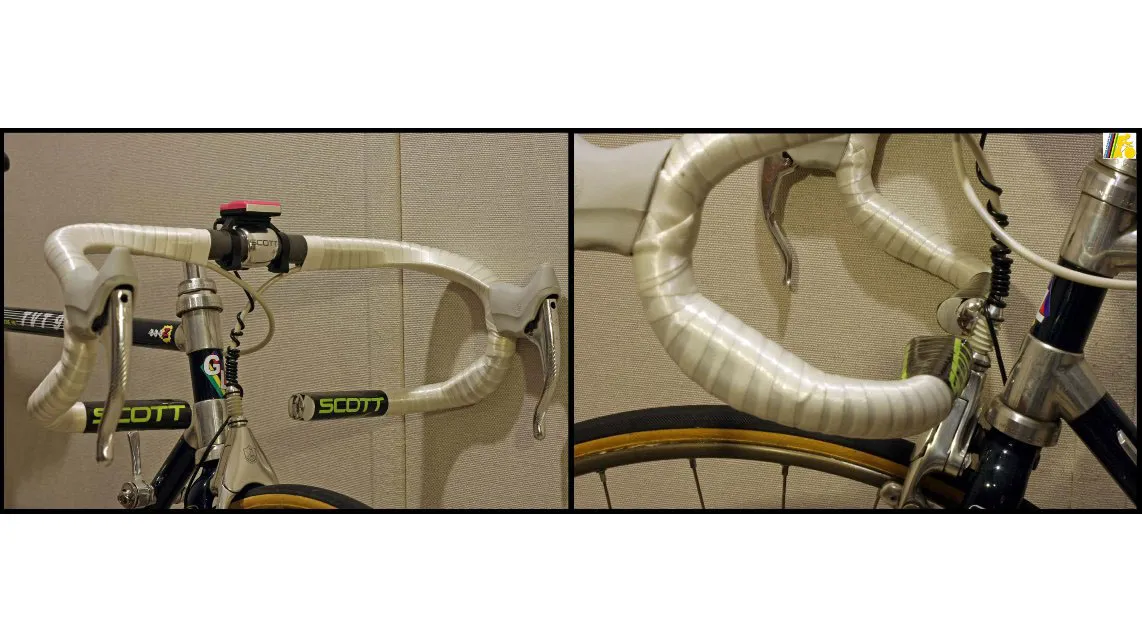
Google image search agrees, with our efforts to find any images of LeMond gripping onto the lower extensions proving entirely fruitless.
Many thanks to LeMond Fans for allowing us to use these images. You can read a write up about recreating LeMond’s famous bikes here.
2. RockShox Roubaix/Ruby fork
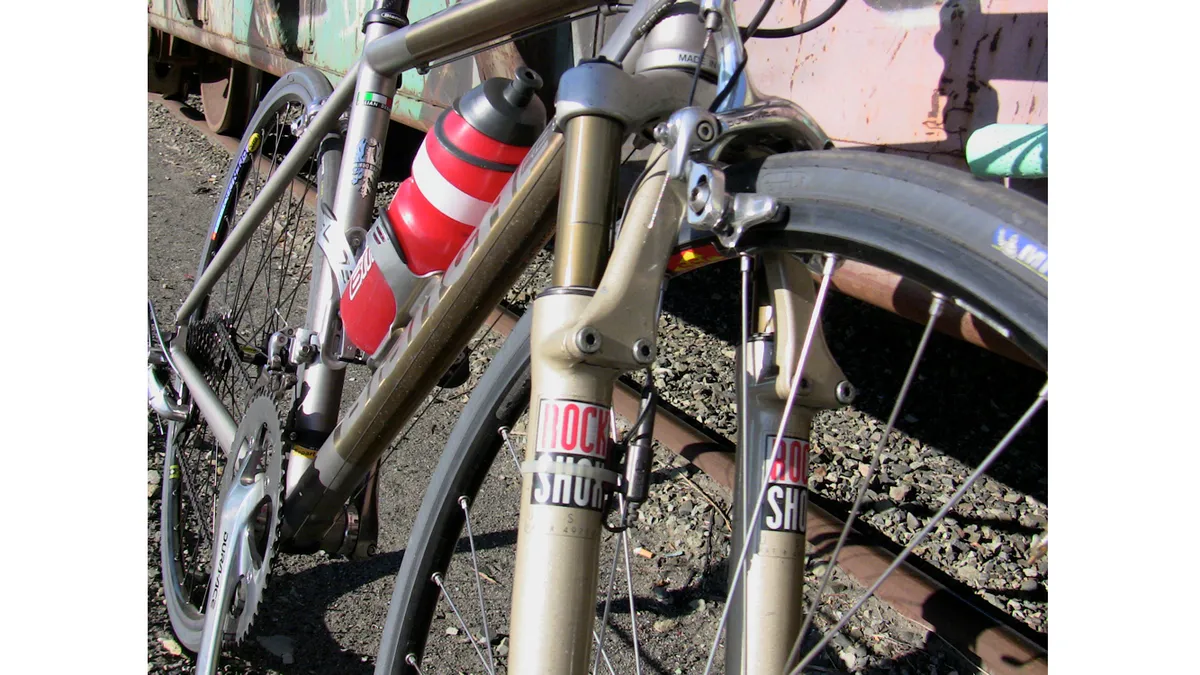
The Fox AX gravel fork set the cycling world into a frenzy when it was announced last April, but the idea of putting suspension on a drop bar bike is nothing new.
The RockShox Roubaix was the most memorable previous effort to put suspension on a road bike, with the fork — essentially a modified version of the legendary MAG21 mountain bike fork — ridden to victory at the 1992, 1993 and 1994 editions of the race that gave the fork its name.
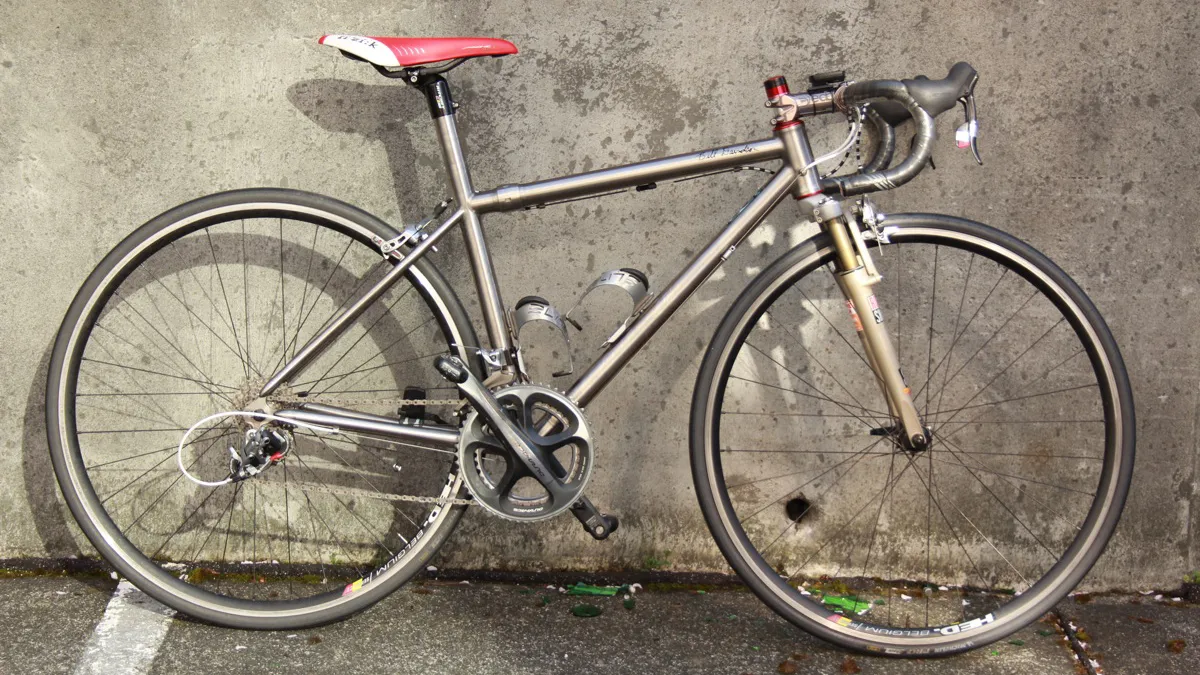
On the face of it, three wins make this look like a successful project. However, in practice the Roubaix was said to be incredibly flexy, with the bolt-on brace woefully inadequate under the force of a full-on sprint, allowing each of the fork legs to move independently, causing all manner of problems.
There’s also no getting around the fact that at 1.18 kg, the fork weighed a shade more than even the steel forks that were still commonplace during this period.
After three years in the limelight, the Roubaix’s winning streak came to an end — Mapei went on to dominate five of the following six editions of the race and the team's bike sponsor, Colnago, strictly forbade the team from using the fork. With with the fork receiving little to no exposure, and attention focussed on other developments in road tech, RockShox abruptly discontinued development of the Roubaix.
RockShox did go on to produce the Ruby, a fork that was designed from the ground up with road riding in mind.
The Ruby addressed some of the concerns surrounding the original design, using a one-piece cast lower that was far stiffer than the original but used an MCU damper — an elastomer by any other name — that, while sensitive to small bumps, had the unnerving tendency to bottom out on bigger bumps.
The fork also produced an equally unpleasant knocking sensation as it topped out of its travel and was discontinued after only a few years on the market.
Had RockShox continued development of the fork, it’s possible that the road bike could look very different today, but for now, at least, the Roubaix remains a curious reminder of a period of furious innovation that once was.
Many thanks to DL Byron at BikeHugger.com for allowing us to use these images. You can read Mark Villegas' excellent write-ups on BikeHugger about the Roubaix and Ruby fork here and here.
p.p1 {margin: 0.0px 0.0px 0.0px 0.0px; font: 11.0px Calibri} span.s1 {font-kerning: none}
3. Aero brakes
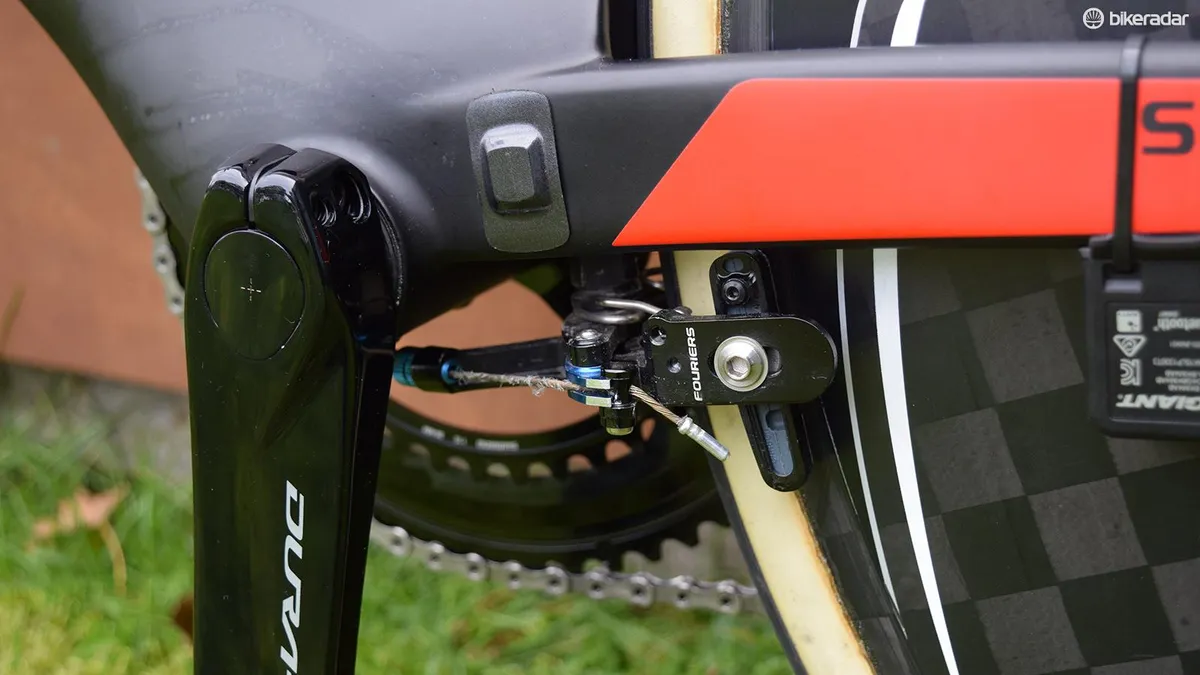
The ‘unique’ positioning of brakes on aero bikes might just be a mechanics worst nightmare (second only to press fit bottom brackets, but that’s a whole other kettle of frustrating fish).
Brakes can be found tucked away in all manner of nooks and crannies on aero bikes, but by far the most popular and most frustrating position is under the chainstays.
While you may save a valuable smattering of watts by hiding a brake behind the bottom bracket shell — a bottom bracket shell that will no doubt contain an awkward and proprietary press fit standard — access to the brake is difficult at best and often impossible without removing the crankset. A very sorry state of affairs indeed.
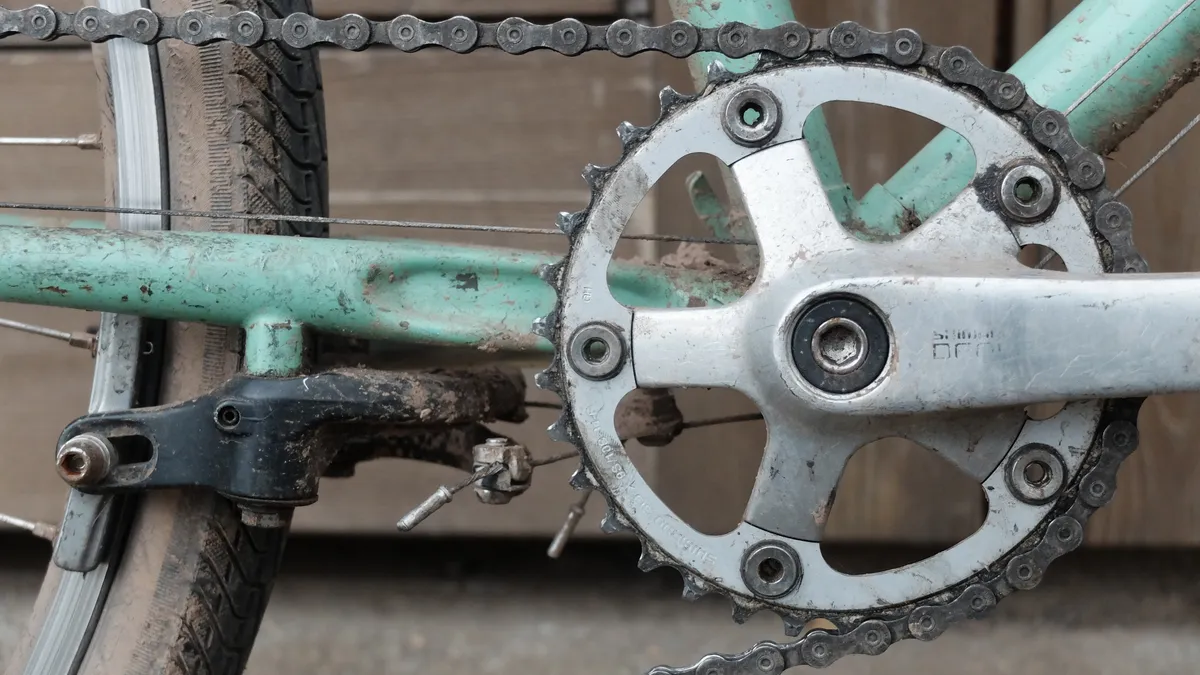
Of course, this idea is nothing new, and those with a longer memory still may be recovering from the industry's curious — and much criticized — obsession with placing U-brakes on the undercarriage of some mountain bikes in the late '80s. Why do we never learn from our mistakes?

While we’ll no doubt provoke the ire of some readers, we think that the further integration of disc brakes, hiding them behind little wind-cheating nubbins and fairings, into aero frames will hopefully put an end to all of this nonsense. And all while presenting a real improvement to braking performance.
Until then, we’d like our rim brakes to stay on the front of the fork and on the back of the seatstays thank-you-very-much.
4. Lo-pro bikes


Lo-pro bikes — sometimes known as ‘funny bikes’ in the US, after the term used to describe drag racing cars with different sized wheels — enjoyed a brief period of popularity in the late seventies through to the early eighties, particularly among the UK’s time trial scene.
The arguments for a lo-pro bike make sense; by running a smaller wheel at the front (usually a 650c wheel), riders could do away with drops, running aero-friendly bullhorn bars at a staggeringly low height. The smaller front wheel also allowed riders to tuck in closer behind their teammates during a team time trial.

(Image credit: https://commons.wikimedia.org/wiki/File:1984_Olympics_-_100k_Team_Time_Trial_(USA_team).jpg)
‘Funny-bikes’ saw some success in the mainstream, most notably with the US team taking the Bronze medal for the team time trial at the 1984 LA Olympics aboard a fleet of lo-pro Raleigh’s, with the team also kitted out with the finest aero regalia of the day.
However, for the majority of racers, the bikes presented little real advantage, with handling highly compromised. And while it’s highly subjective, there’s no getting around the fact that they look a little bizarre.
Aesthetic concerns needn’t have mattered because the era of the lo-pro bike came to a crashing halt in the late '90s when the UCI formally banned bikes with different sized wheels, alongside introducing far more stringent rules regarding geometry and rider positioning.
In recent years, the lo-pro has been embraced by trendy fixie-istas the world over because riding with one gear and no brakes clearly wasn’t hard enough already.
Thanks so much to Caleb at Basement Bicycles for allowing us to use the images of his Centurion.
5. Campagnolo Delta brake
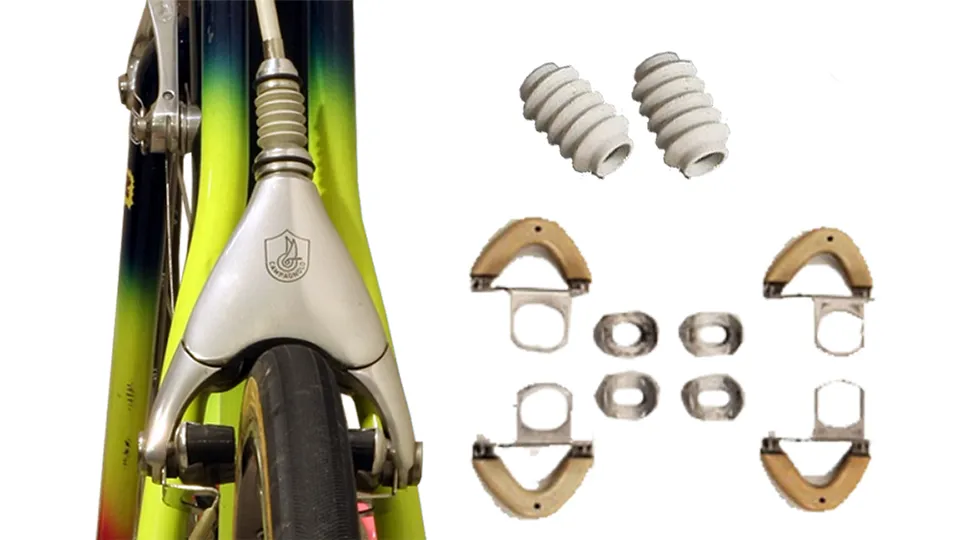
Ahh, the Campagnolo Delta brake — has there ever been a more curiously revered component in the world of cycling?
Almost universally described as Campagnolo’s most beautiful component, the Delta brake was so named after the brakes' handsome, supposedly aero, monolithic looking triangular faceplate.

Looks are where praise for the Delta ends. The brake is a notoriously complex centre pull design that actuated an articulated parallelogram, as opposed to the straddle cable used in normal centre pull brakes.
The supposed advantage of this system was that it would offer variable mechanical advantage, increasing power throughout the travel of the lever, but out on the road the brakes offered only mediocre power.
Servicing the brakes was also notoriously difficult, with those that have been brave enough to take them apart counting 76 individual components — a far cry from the dozen or so that make up a modern and far more powerful sidepull design.
The fate of the Delta brake was decided rather immediately after reports of catastrophic failures demanded a recall of the first generation. Campagnolo stopped production of the brakes only a few years later.

Despite their lacklustre performance, clean examples of the Delta brake still command a bafflingly high price, with new old stock brakes going for as much as £1,200 on eBay.
Thanks again to Byron at BikeHugger and LeMond Fans for letting us use these images. You can read Byron’s guide on how to service the brakes here.
Let us know if there's any particularly bad tech that you think we've missed. Or, if you want to defend something from the above, tell us why (we're sure you were going to anyway).
